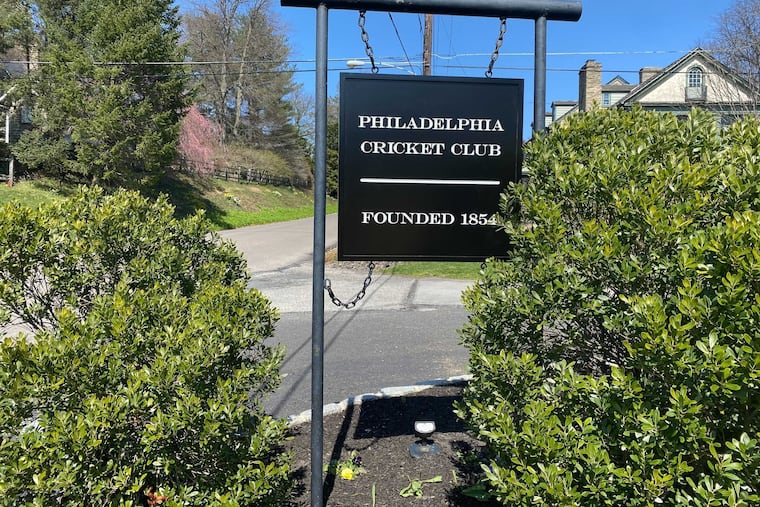Philadelphia Cricket Club removes sign with Native American logo that a neighboring church called offensive
The national discussion over the use and misuse of Native American image came to one of the city’s wealthiest neighborhoods.

The Philadelphia Cricket Club has removed outdoor signs that featured a feathered American Indian head amid a complaint from a neighboring Chestnut Hill church that the logo projected “a painful racial insensitivity.”
A new sign features a simple, square black background inscribed “Philadelphia Cricket Club Founded 1854.” In another spot on the grounds, one of the old signs has been taken down but not yet replaced.
Efforts to reach club leaders were unsuccessful on Monday.
Last year, the impassioned national discussion over the use and misuse of Native American images, names, and statues came to one of the city’s wealthiest neighborhoods, where the club and St. Martin-in-the-Fields Episcopal Church have long stood side by side.
The church wanted the club to retire a logo similar to that worn by the NHL’s Chicago Blackhawks, one that reaches to an era when white settlers romanticized Native Americans, even as they were killing them and taking their land.
The use of a Native figure on the club sign “represents the white supremacist legacy of our neighborhood,” and “for a club founded for white Protestant elites during the height of the genocide against Native peoples to continue with this logo is to deny our horrific past,” the vestry and the rector, the Rev. Jarrett Kerbel, wrote to Cricket Club president F. John White. “We ask you to retire the offensive logo and replace it with something more benign.”
The neighborhood’s growing diversity demands consideration of “what it means for children and families — especially children and families of color — to be exposed to your logo every day,” the letter said.
The church was closed on Monday, and efforts to contact Kerbel and others there were unsuccessful.
The Black Lives Matter movement has driven debates and reforms around systemic racism in America, bringing fresh attention to the appropriation of Native American iconography in a Philadelphia region rife with problematic team names, signs, and monuments.
A petition that circulated inside the Cricket Club last year declared that more and more members find the logo “ethically and professionally problematic, for ourselves, as well as for our diverse staff, who are required to wear racist imagery. We want to be proud of a place that we love.”
Keeping the logo “serves as a regressive and inflammatory choice,” the petition stated. Given the speed of revisions among pro sports teams in places like Washington and Cleveland, it’s “just a matter of time before the PCC comes under public pressure to make the same change.”
The Cricket Club bills itself as the nation’s oldest country club and one of its finest, offering sports, dining, and social events. It was founded in 1854 by a group of University of Pennsylvania alumni who played the game as students and wanted to continue their competitions.
No records have surfaced that explain why the Native face or head is on the Cricket Club logo, said Chestnut Hill College history professor David Contosta, an authority on the club and the area.
But the mid-1800s was an era when whites idealized Native Americans, or rather, their own imaginings of Native Americans, believing American Indians to be a vanishing race. By the late 19th century, Contosta said, cities like Philadelphia were becoming crowded and smoky. People yearned for an earlier, more natural time, and Native Americans seemed emblematic of that.